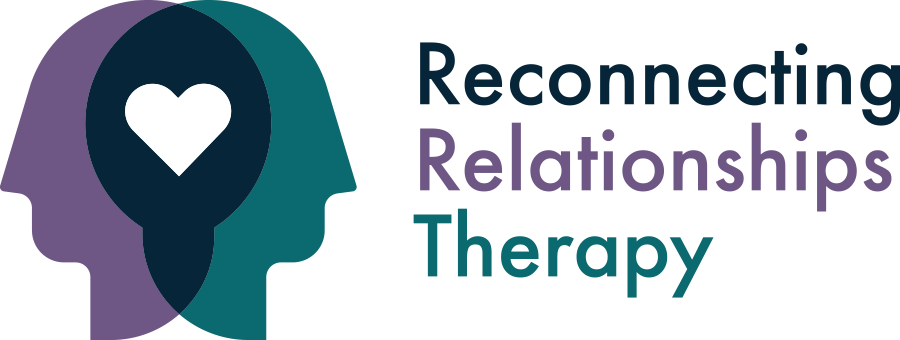Growing Relationships | Therapy in Fort Worth, TX
What is Vulnerability?
Vulnerability in relationships means sharing the most honest and authentic parts of ourselves that we fear will result in our rejection. The possibility of rejection can leave us feeling like our entire being is in danger when we engage with others in vulnerable ways. Nonetheless, vulnerability is a way to establish deep and meaningful connections in our most important relationships.
Vulnerability is influenced by our own unique culture, history, and sense of self. What feels vulnerable to one person may not feel vulnerable to someone else. To strengthen relationships, it’s not only crucial to practice vulnerability, but we must also attune to the vulnerability of others. When cues of vulnerability are missed, the relationship can be threatened.
Recognizing Vulnerability | Working With Your Therapist in Fort Worth Texas
We communicate vulnerability through both verbal and nonverbal cues. In other words, it’s not only about what we say, but how we say it. Does our voice shake? Do we tear up? Do we feel nervous? Others are more likely to recognize vulnerability when we show them behaviorally, acknowledging our willingness to be vulnerable in the moment.
When our verbal and nonverbal cues are not aligned, people are less likely to respond to our attempts at vulnerability. This is not because people don’t care, rather they likely did not sense what we shared needed caring and support. Emotions give others signals on how to respond to us, and when our actions and words align to accurately portray our emotions, we are more likely to receive the connection and support we need.
Examples of vulnerability
Sharing your feelings or thoughts to a friend
Physical affection
Voicing your needs in a relationship
Expressing how you’ve been hurt in the past
Vulnerability vs Oversharing
Although many people will appreciate our vulnerability, some people may not be as receptive. The risk of rejection is increased when we engage in oversharing. Vulnerability involves authentically sharing emotions, thoughts, and concerns in a deliberate way to promote trust, mutual understanding, and support.
Oversharing is often used as a defense mechanism. Instead of acknowledging our feelings, we may overshare to distance ourselves from our feelings or protect ourselves against insecurities. Oversharing is not vulnerability because we are more likely to overshare automatically to reduce our anxieties, while genuine vulnerability occurs intentionally, after we have determined we are safe with someone.
Vulnerability with the Right People
One of the best signs that someone is trustworthy is if they have previously responded well to your vulnerability. Since we know rejection is a real risk to vulnerability, it’s important to mitigate these risks as best we can. If we are feeling particularly vulnerable, we could start by talking with a friend we already trust and feel secure with. If we then go to a different friend whose trust has not yet been verified, it won’t hurt as badly if they don’t respond as we hoped. This also gives us an opportunity to figure out if this friend is someone we can trust with our vulnerability in the future. A therapist is also a great person to start practicing vulnerability with.
Barriers to Vulnerability
Although vulnerability is essential for relationships, real challenges to vulnerability do exist. Acknowledging which barriers impact you and others is necessary for vulnerability to create fulfilling relationships.
Fear of Rejection: When our vulnerability is rejected, we further distance ourselves from vulnerability out of fear of future rejection. Fearing rejection may also be rooted in early experiences of childhood.
Past Experiences: Past traumas, betrayals, or emotional abuse can make vulnerability especially difficult to practice, often as an attempt to protect from more painful experiences.
Social and Cultural Expectations: Social norms, gender roles, and cultural expectations can discourage vulnerability and suppress emotional expression. Systemic traumas, such as violence, can also hinder expression of vulnerability.
How Vulnerability Can Help Us
People often believe vulnerability burdens relationships; however, this is not exactly true. People who self-disclose are generally better liked and viewed as genuine. Vulnerability not only promotes connection because we are perceived as more authentic; it also shows others that we trust them. Allowing others to influence and support us not only benefits us, but it improves their mental health, physical health, and adds meaning to our relationships.
Trusted relationships are built from vulnerability, and when we find ourselves unable to trust others, we risk further isolating ourselves into loneliness. Because relationships are crucial to our existence, navigating life without trust in others can result in depression and hopelessness. We may avoid vulnerability by projecting perfection as a barrier. When we deny ourselves the acceptance of our flaws and shortcomings, we think less of ourselves and develop poor self-perception. This further isolates us from others and prevents meaningful connections fundamental to life.
Vulnerability in Romantic Relationships
We naturally want to show the “best versions” of ourselves when we meet potential romantic partners. However, if we hope for an authentic connection, intimacy, and trust, we will have to share the more vulnerable parts of ourselves as well. When we prioritize perfection over authenticity, we create instability and distrust in our relationship.
Vulnerability promotes intimacy in romantic relationships by encouraging us to be more responsive to each other. Vulnerable self-disclosure also lays the foundation for emotional safety in a romantic relationship. This emotional safety allows us to be able to discuss more difficult topics with our romantic partners, further improving the relationship.
Vulnerability in Friendships
In childhood, friendships are some of our first relationships outside our families that allow us to practice vulnerability and feel accepted by others. As adults, we rely on our friends to provide a network of support and community.
When we avoid vulnerability in friendships, we don’t let our friends know how important they are to us, even if we care about them very much. People typically want to feel trusted and meaningful in the lives of people close to them. Successful relationships require a balance of give and take. Share more honestly and offer support when a friend shares with you.
Vulnerability at Work
Professional relationships come with specific challenges and unwritten rules. We often present a very different version of ourselves in our professional lives. Although professional boundaries do very much exist, vulnerability in the workplace can benefit many of our workplace relationships.
We are often socialized to believe our worth is contingent on being complicit, efficient, and near perfect in the professional sphere. Anything short can threaten the stability of our professional identity with replacement. Many of us are expected to bring our fullest selves to work, so what if we did?
Vulnerability can create mutually beneficial relationships between employees and direct supervisors. Without vulnerability, lapses in performance may be attributed to a lack of care, lack of knowledge, or not enough effort. When we do not disclose struggles or external pressures impacting our work, we are further solidifying the expectation of perfection and productivity.
Practicing Vulnerability
Remember, vulnerability can be transformative for many relationships when practiced deliberately. Here are a few places to start practicing vulnerability:
Self-awareness and Self-acceptance: Identifying and understanding your own emotions is the foundation to any successful relationship. When we are aware of our own feelings and thoughts, we are better able to emotionally regulate and participate in relationships.
Open Communication: Communicating our thoughts and feelings authentically and respectfully promotes further trust and reduces misunderstandings in relationships.
Empathy and Active Listening: Empathy and active listening allows us to connect with the emotional landscapes of others and strengthens trust. Conflict is also more successfully managed when using empathy and active listening.
Flexible Boundaries: Creating personal boundaries and respecting the boundaries of others allows for feeling safe in a relationship. Boundaries recognize that vulnerability will be shared at a comfortable pace for both individuals.
If you are interested in further exploring vulnerability in your relationships, you can schedule a free consultation with me through the link below or email me at amy@reconnectingrelationships.com
Schedule with Amy
Amy’s Bio
Schedule an appointment for therapy in Fort Worth, TX
















